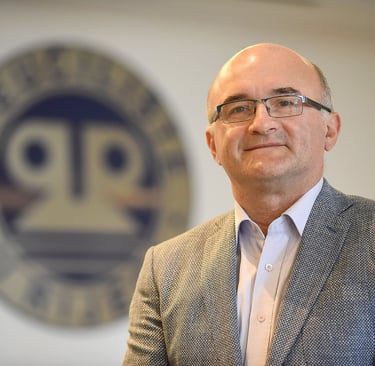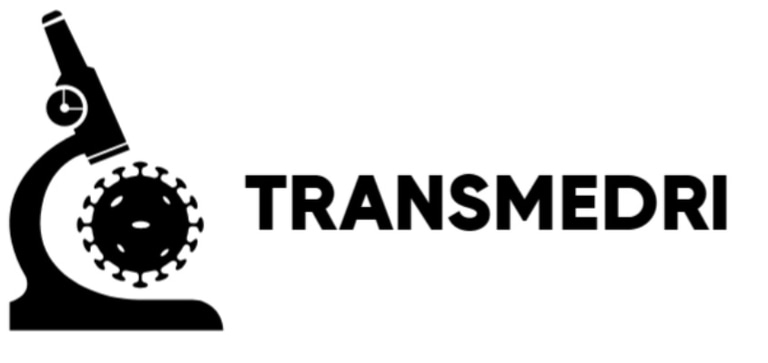Bojan Polić


Position: Department Head
Institute: University of Rijeka faculty of Medicine
Department: Histology & Embryology
Work address: Braće Branchetta 20, 51000, Rijeka, Croatia
eMail: Bojan.Polic@uniri.hr
Tel.: 00385 (0) 51 651 206
Curriculum vitae of:
Title: Professor, MD, PhD.
Work experience
Since 2008 Professor, Faculty of Medicine / Department of Histology & Embryology, University of Rijeka, Croatia
Since 2003 Guest Professor (Head of the Dept. of Medical biology 2007-2013) Faculty of Medicine / Dept. of Med. biol., University of Mostar, Bosnia & Herzegovina
2003 – 2008 Associate Professor, Faculty of Medicine / Dept. of Histology & Embryology, University of Rijeka, Croatia
2000 – 2003 Assistant Professor, Faculty of Medicine / Dept. of Histology & Embryology, University of Rijeka, Croatia
1994 – 2000 Assistant, Faculty of Medicine / Dept. of Physiol. & Immunol. (1992 - 1996) – Dept. of Histol. & Embryol. (1996 - 2000), University of Rijeka, Croatia
1992- 1994 Research Assistant / PhD student, Faculty of Medicine / Dept. of Physiol. & Immunol., University of Rijeka, Croatia
Education
1997 – 2001 Postdoctoral training, Institute for genetics / Dept. of Immunology (prof. K. Rajewsky), University of Cologne, Germany
1996 Ph.D., Faculty of Medicine / Dept. of Physiol. & Immunol., University of Rijeka, Croatia
1989 M.D., Faculty of Medicine, University of Rijeka, Croatia
SUPERVISION OF GRADUATE STUDENTS AND POSTDOCTORAL RESEARCHERS:
2002 - 2006 Alen Braut, dr. stom. – currently associate professor at the Faculty of dental medicine Rijeka
2003 - 2010 Biljana Zafirova, dipl. ing. biotech. – postdoc at the Luis Pasteur Institute, Paris (Dr. Mathew Alberts), awarded withe EMBO, MSC, FEBS and Luis Pasteur postdoctoral fellowships (2010)
2010 – 2013 dr. sc. Felix Wensveen, postdoctoral fellow – awarded with MSC-IEF postdoctoral fellowship (2010), currently associate professor at the Faculty of Medicine University of Rijeka, recently awarded with the award of the Croatian Academy of Sciences and Arts (HAZU) (2020)
2012 - 2016 Vedrana Jelenčić, mag. ing. biotech. – awarded with Croatian State Award for Science for young scientists (2019), currently postdoctoral fellow in my lab
2012 - 2017 Maja Lenartić, dipl. ing. biotech. – currently postdoctoral fellow in my lab
2014 - 2018 Marko Šestan, dr. med. vet. – awarded with EMBO fellowship (2020) and Croatian State Award for Science (2019), currently postdoctoral fellow at the Institute of Unknown, Champolimaud Fonddation, Lisabon, Portugal (Dr. Henrique Veiga-Fernandes)
2014 - 2018 Sonja Marinović, mag. biol. mol. – currently postdoctoral fellow at the Institute Ruđer Bošković, Zagreb, Croatia
Since 2018 Ante Benić, mag. biol. mol.
2020 - 2023 Karlo Mladenić, mag. biotech. in med.. – currently postdoctoral fellow in my lab
Since 2020 Sanja Mikašinović, mag. biotech. in med.
Awards
2019 Award of the City of Rijeka, Croatia
2016 Award “Ante Šercer” of the Croatian Academy of Medical Sciences (AMZH), Croatia
2012 Award of the Croatian Academy of Sciences and Arts (HAZU), Croatia
2002 Croatian State Award for Science, Croatia
1989– 1999 Alexander von Humboldt Fellowship, Germany
Major scientific achievements
Interaction between the immune and endocrine systems in viral infections
We investigated the role of a viral infection (MCMV, LCMV, Influenza A) in the progression of T2DM and discovered a new feedback mechanism between the immune and endocrine systems. Virus induced IFNg, mainly produced by NK cells, specifically induce insulin resistance in skeletal muscle by downregulation of the insulin receptor. This results in a transient compensatory hyperinsulinemia to keep normal blood glucose levels in lean subjects and to potentiate specific CD8-mediated anti-viral response. However, in obese pre-diabetic subjects, already exposed to the metabolic priming and certain degree of insulin resistance (particularly in liver), viral infection causes rapid progression to T2DM (Šestan et al., Immunity 49:164-177, 2018). Results of this paper were commented in the same issue of Immunity (K. Kiernan and N. J. MacIver, Immunity 49:6-8, 2018) and Nat. Rev. Endocrin. (C. Herder, Nat. Rev. Endocrin. 14:567–568, 2018), also reviewed in Wensveen at al., Eur. J. Immunol. 49:982-995, 2019). I leaded and organized this research as PI and gave significant intellectual contribution to the work.
Mechanism of immune sensing of metabolically stressed adipocytes of the visceral adipose tissue in obesity responsible for development of inflammation and insulin resistance
In the last 7 years, my group is intensively working on immune-sensing mechanisms and early immune responses in obesity/infection responsible for the development of inflammation and insulin resistance. We discovered major role of NK cells in immune sensing of the obese visceral adipose tissue and initiation of inflammatory immune response that leads to development of systemic insulin resistance (Wenswen at al., Nat. Immunol. 16:376-385, 2015; reviewed in Wensveen et al., Eur. J. Immunol. 45:2446-56, 2015; and Wensveen et al.; Semmin. Immunol. 27:322-333, 2015). Briefly, metabolically stressed adipocytes in obesity induce expression of NCR1 ligands (“stress ligands”) which in turn activate resident NK cells via NCR1 activating receptor. Activated NK cells produce IFNg that drives differentiation of M1 macrophages and production of proinflammatory cytokines responsible for the increase of systemic insulin resistance. Either depletion of NK cells, neutralization of IFNg, genetic ablation of NCR1 or therapeutic blockade of NCR1-NCR1L interaction leads to the prevention of inflammation and insulin resistance in obese mice. This is the first time shown mechanism of direct early immune sensing of metabolically stressed adipocytes by the innate immune system responsible for initiation of inflammation in visceral adipose tissue in obesity and development of insulin resistance. I leaded and organized this research as PI and gave intellectual contribution to the work.
Biological roles of the NKG2D receptor
I introduced gene targeting in Croatia (2003) after return from my postdoc in K. Rajewsky lab in Cologne, Germany, and my group generated our own mouse models for NKG2D immunodeficiency, Klrk1-/- and Klrk1fl/fl mice (Zafirova et al., Immunity 31:270 – 282, 2009; Zafirova et al., Cell Mol. Life Sci.,68:3519 - 3529, 2011). It enables us to study biological roles of this important “cellular stress sensor” and activating receptor expressed on NK and subpopulations of T cells (NKT, gd and activated ab T cells). We discovered that lack of NKG2D impairs development of NK cells and causes paradoxically enhanced anti-tumor and anti-viral functions activity of these cells (Zafirova et al., Immunity 31:270 – 282, 2009). In following research, we found a novel mechanism of education of NK cells where NKG2D/DAP12 signalling axis sets activation thresholds for other two activating receptors, NCR1(NKp46) and CD16, early in the development of NK cells. Conditional deletion of NKG2D at the immature stage (NCR1Cre x Klrk1fl/fl mice) of NK cell development abrogates this effect. This control operates through downregulation of CD3z that is part of a negative feedback loop controlling both receptors. (Jelenčić et al. Nat. Immunol. 19:1083–1092, 2018). This research got a comment in News and Views of the same issue of Nat. Immunol. (A. Veillette & Y. Lu, Nat. Immunol. 19:1046–1047, 2018). We also found that NKG2D plays important role in generation of CD8 memory T cells (Wenseven et al. J. Immunol 191:1307-15, 2013), cytokine secretion of activated CD8 T cells (Kavazović et al., Eur. J. Immunol. 47:1123-1135, 2017) as well as in generation of B1a cells (Lenartic M., J. Immunol, 198:1531-1542, 2015). I leaded and organized the above-mentioned research and intellectually contributed to the work.
In collaboration with other research groups, we contributed to the discovery of some other biological roles of NKG2D such as: in sensing of skin cellular stress by gd T cells (Strid et al., Science 334:1293-7, 2011); in generation and maintenance of memory ab CD8 T cell (Zloza et al., Nat. Med. 18:422-8, 2012); in development of T1DM (Markiewicz et al., Immunity 36:132-41, 2013; Tembath AT et al, ImmunoHorizons, 1:198-212, 2017); in immunosensensing of senescent cells (Sagiv et al., Aging-US, 8:328-44, 2016); and in cancer immunosurveillance (Schneider et al., Clinical Cancer Research 24:882-895, 2018; Raju et al, J. Immunol., 196:4805-13, 2016; Belting L. Eur. J. Immunol., 45:2593-601, 2015).
The role of ab TCR in maintenance of T cells
During my postdoctoral training in group of prof. Klaus Rajewsky, Institute for Genetics, University of Cologne, Germany (1997-2001), I generated mouse mutant strain for conditional ablation of the TCR a chain (TCR Cafl/fl ). Using this mouse strain we found that naive CD4 and CD8 T cells are entirely dependent on the TCR signalling, while memory CD4 and CD8 T cells are mostly independent on TCR signaling (Polić et al., PNAS USA, 17;98(15):8744-9, 2001). In collaboration with prof. Marc Schmidt Supprian we found that TCR is largely dispensable for maintenance of NKT cells (Vahl et al., Plos Biology, 11:e1001589, 2013), but it is essential for maintenance of fully functional Treg cells (Vahl et al. 2014 Immunity, 41:722-36, 2014).
Immunosurveillance of cytomegalovirus infection
During my PhD training in prof. S. Jonjić group I investigated mechanisms of immunosurveillance of latent cytomegalovirus infection using B-cell deficient mice (C57BL/6 mMT/mMT). I found that CMV latency is controlled by NK, CD4 and CD8 T cells in a hierarchical and redundant order where CD8 and NK cells play major role (Polic et al., J. Exp. Med., 188:1047-54, 1998). We have also showed that antibodies are not essential for the control of acute infection or latency, but they play important role in preventing spread of recurrent infection (Polic et al. 1998 J. Exp. Med. 188:1047-54, 1998, Jonjić et al., J. Exp. Med., 179:1713-7, 1994). This was the first in vivio evidence on the specific role of antibodies and immune cell subsets in the control of latent CMV infection. Later, I also participated in discovery of several CMV immunoevasins (Krmpotić et al. 1999 J. Exp. Med. 190:1285-96, 1999, and Krmpotić et al. 2005 J. Exp. Med. 201:211-20, 2005)
Follow
+385 51 651 176
Contact
Faculty of Medicine
Department of histology & Embryology
Braće Branchetta 20
51000, Rijeka, Croatia


